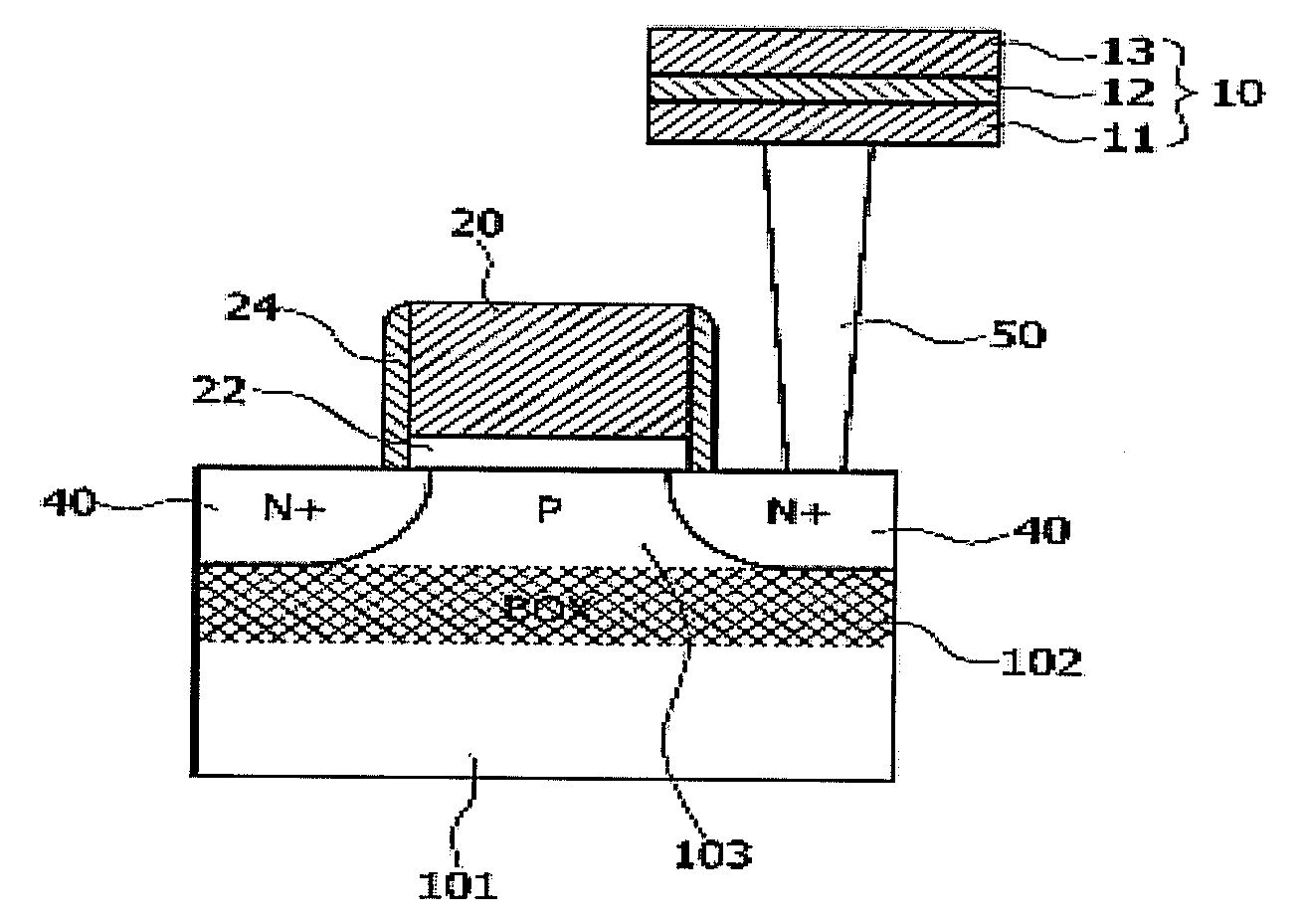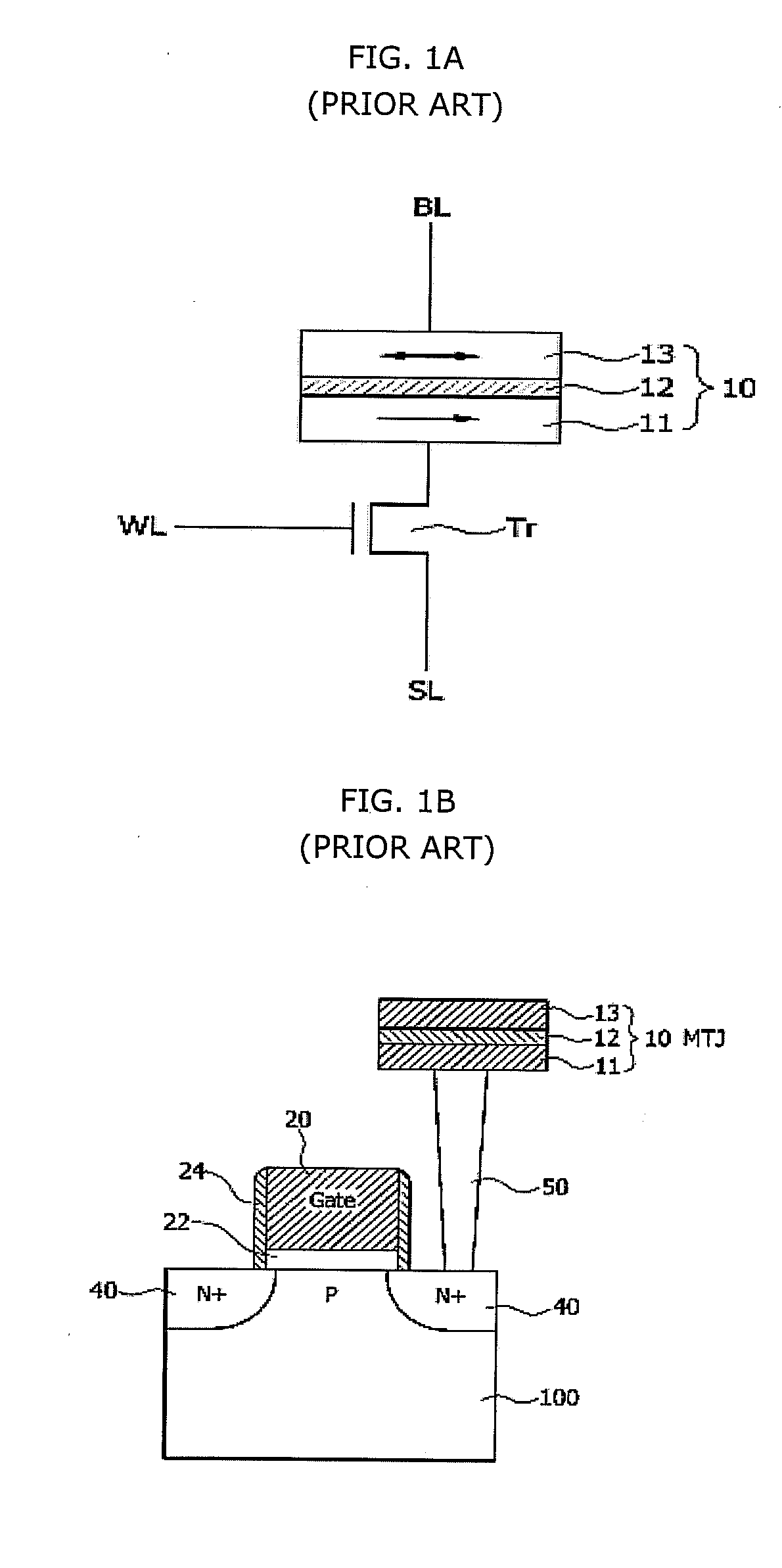Magnetoresistive memory cell using floating body effect, memory device having the same, and method of operating the memory device
a floating body effect and magnetic memory technology, applied in the field of magnetic random access memory (mram), can solve the problems of flash memory having non-volatile characteristics, data loss, power loss increase, etc., and achieve the effect of improving the current driving capability of a select transistor
- Summary
- Abstract
- Description
- Claims
- Application Information
AI Technical Summary
Benefits of technology
Problems solved by technology
Method used
Image
Examples
Embodiment Construction
[0029]Hereinafter, embodiments of the present invention will be described in detail with reference to the attached drawings. Reference now should be made to the drawings, in which the same reference numerals are used throughout the different drawings to designate the same or similar components. In the following description of the present invention, detailed descriptions may be omitted to the extent that providing the detailed descriptions of related well-known constructions or functions may make the crux of the present invention unclear.
[0030][Memory Cell Configuration]
[0031]FIGS. 3A and 3B are an equivalent circuit diagram and a sectional view, respectively, of a magnetoresistive memory cell according to an embodiment of the present invention. Referring to FIGS. 3A and 3B, a select transistor functioning as a switching device has a structure in which a MOS transistor Tr and a Bipolar Junction Transistor (BJT) are coupled to each other. The select transistor having this structure ca...
PUM
 Login to View More
Login to View More Abstract
Description
Claims
Application Information
 Login to View More
Login to View More - R&D
- Intellectual Property
- Life Sciences
- Materials
- Tech Scout
- Unparalleled Data Quality
- Higher Quality Content
- 60% Fewer Hallucinations
Browse by: Latest US Patents, China's latest patents, Technical Efficacy Thesaurus, Application Domain, Technology Topic, Popular Technical Reports.
© 2025 PatSnap. All rights reserved.Legal|Privacy policy|Modern Slavery Act Transparency Statement|Sitemap|About US| Contact US: help@patsnap.com



